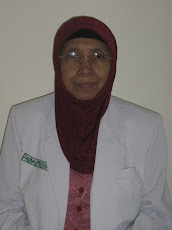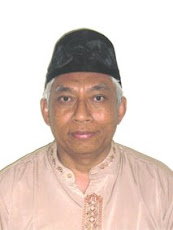
Chronic obstructive pulmonary disease (COPD) is comprised primarily of two related diseases - chronic bronchitis and emphysema. In both diseases, there is chronic obstruction of the flow of air through the airways and out of the lungs, and the obstruction generally is permanent and progressive over time.
Asthma also is a pulmonary disease in which there is obstruction to the flow of air out of the lungs, but unlike chronic bronchitis and emphysema, the obstruction in asthma usually is reversible. Between "attacks" of asthma the flow of air through the airways usually is good.
There are exceptions, however. In some patients with COPD the obstruction can be partially reversed by medications that enlarge or dilate the airways (bronchodilators) as with asthma. Conversely, some patients with asthma can develop permanent airway obstruction if chronic inflammation of the airways leads to scarring and narrowing of the airways. This process is referred to as lung remodeling. These asthma patients with a fixed component of airway obstruction are also considered to have COPD.
There also is frequent overlap among COPD patients. Thus, patients with emphysema may have some of the characteristics of chronic bronchitis. Similarly, patients with chronic bronchitis also may have some of the characteristics of emphysema.
How does the normal lung work?
The lung is the organ for gas exchange; it transfers oxygen from the air into the blood and carbon dioxide (a waste product of the body) from the blood into the air. To accomplish gas exchange the lung has two components; airways and alveoli. The airways are branching, tubular passages that allow air to move in and out of the lungs. The wider segments of the airways are the trachea and the two bronchi (going to either the right or left lung). The smaller segments are called bronchioles. At the ends of the bronchioles are the alveoli, thin-walled sacs. (The airways and alveoli can be conceptualized as bunches of grapes with the airways analogous to the stems and the alveoli analogous to the grapes.) Small blood vessels (capillaries) run in the walls of the alveoli, and it is across the thin walls of the alveoli where gas exchange between air and blood takes place.
Breathing involves inspiration followed by exhalation. During inspiration, muscles of the diaphragm and the rib cage contract and expand the size of the chest (as well as the airways and alveoli) causing negative pressure within the airways and alveoli. As a result, air is sucked through the airways and into the alveoli. During exhalation, the same muscles relax to their resting positions, shrinking the chest and creating positive pressure within the airways and alveoli. As a result, air is expelled from the lungs.
The walls of the bronchioles are weak and have a tendency to collapse, especially while exhaling. Normally, the bronchioles are kept open by the elasticity of the lung. Elasticity of the lung is supplied by elastic fibers which surround the airways and line the walls of the alveoli. When lung tissue is destroyed, as it is in patients with COPD who have emphysema, there is loss of elasticity and the bronchioles can collapse and obstruct the flow of air.
Asthma also is a pulmonary disease in which there is obstruction to the flow of air out of the lungs, but unlike chronic bronchitis and emphysema, the obstruction in asthma usually is reversible. Between "attacks" of asthma the flow of air through the airways usually is good.
There are exceptions, however. In some patients with COPD the obstruction can be partially reversed by medications that enlarge or dilate the airways (bronchodilators) as with asthma. Conversely, some patients with asthma can develop permanent airway obstruction if chronic inflammation of the airways leads to scarring and narrowing of the airways. This process is referred to as lung remodeling. These asthma patients with a fixed component of airway obstruction are also considered to have COPD.
There also is frequent overlap among COPD patients. Thus, patients with emphysema may have some of the characteristics of chronic bronchitis. Similarly, patients with chronic bronchitis also may have some of the characteristics of emphysema.
How does the normal lung work?
The lung is the organ for gas exchange; it transfers oxygen from the air into the blood and carbon dioxide (a waste product of the body) from the blood into the air. To accomplish gas exchange the lung has two components; airways and alveoli. The airways are branching, tubular passages that allow air to move in and out of the lungs. The wider segments of the airways are the trachea and the two bronchi (going to either the right or left lung). The smaller segments are called bronchioles. At the ends of the bronchioles are the alveoli, thin-walled sacs. (The airways and alveoli can be conceptualized as bunches of grapes with the airways analogous to the stems and the alveoli analogous to the grapes.) Small blood vessels (capillaries) run in the walls of the alveoli, and it is across the thin walls of the alveoli where gas exchange between air and blood takes place.
Breathing involves inspiration followed by exhalation. During inspiration, muscles of the diaphragm and the rib cage contract and expand the size of the chest (as well as the airways and alveoli) causing negative pressure within the airways and alveoli. As a result, air is sucked through the airways and into the alveoli. During exhalation, the same muscles relax to their resting positions, shrinking the chest and creating positive pressure within the airways and alveoli. As a result, air is expelled from the lungs.
The walls of the bronchioles are weak and have a tendency to collapse, especially while exhaling. Normally, the bronchioles are kept open by the elasticity of the lung. Elasticity of the lung is supplied by elastic fibers which surround the airways and line the walls of the alveoli. When lung tissue is destroyed, as it is in patients with COPD who have emphysema, there is loss of elasticity and the bronchioles can collapse and obstruct the flow of air.


.jpg)







